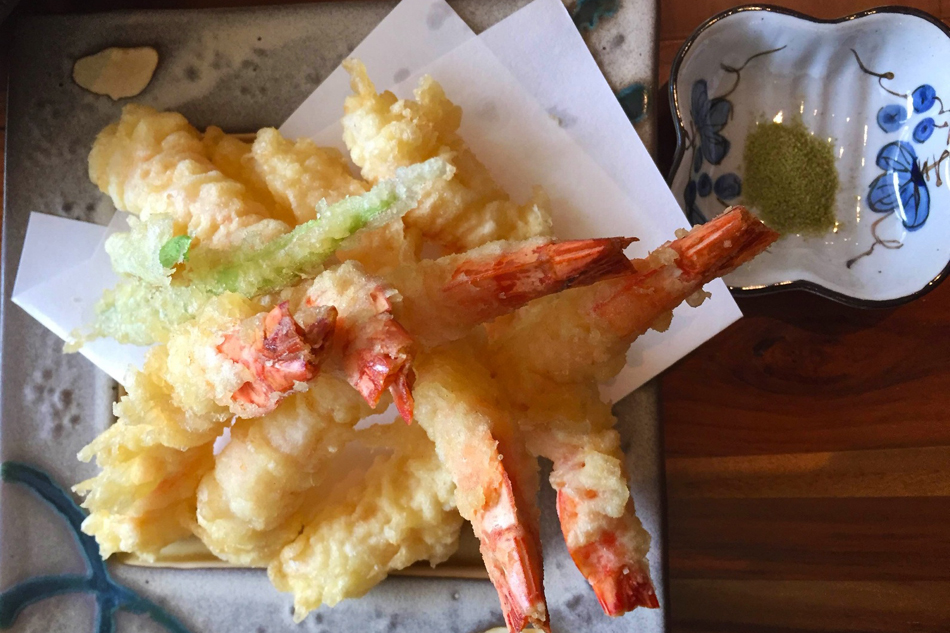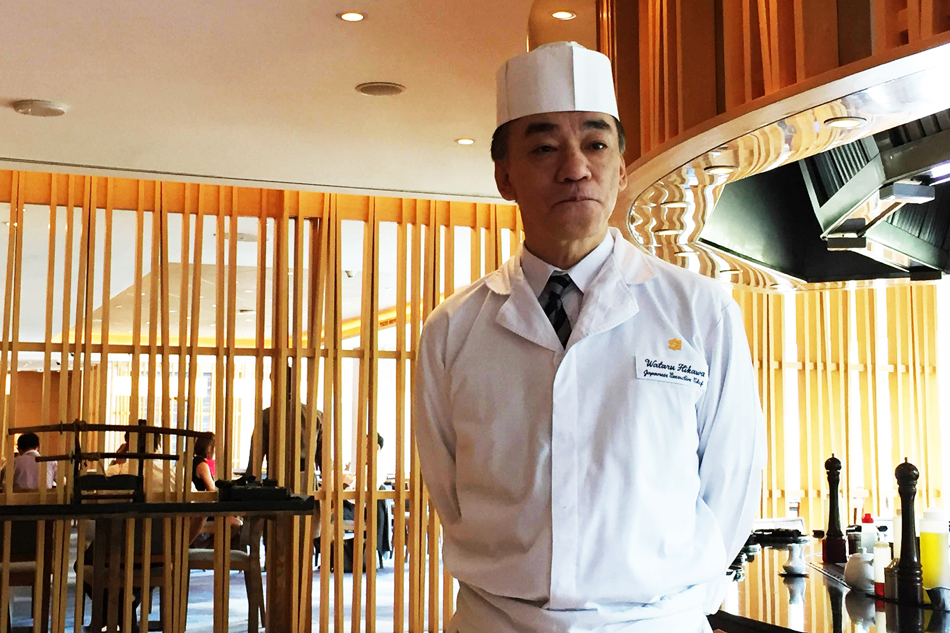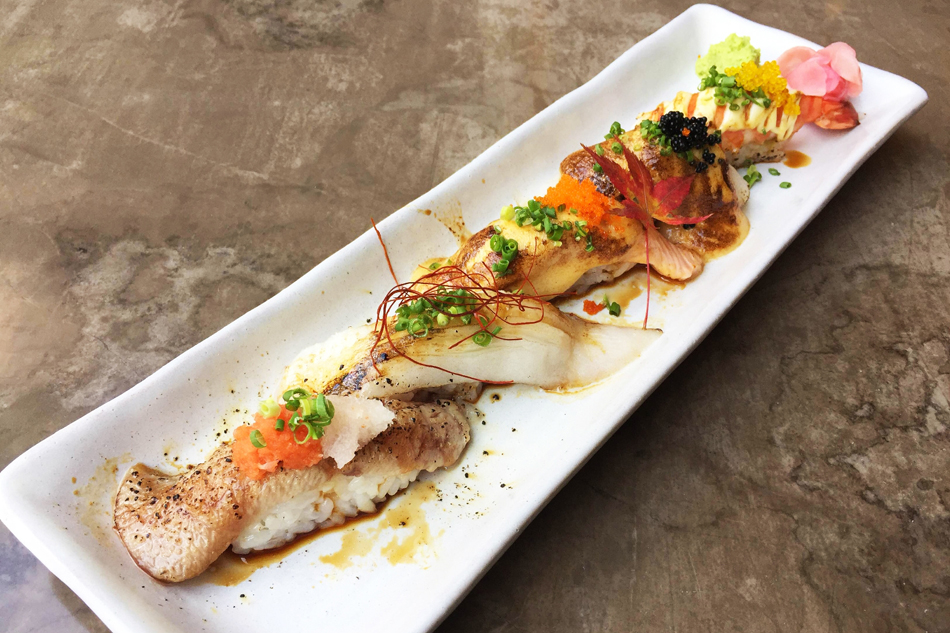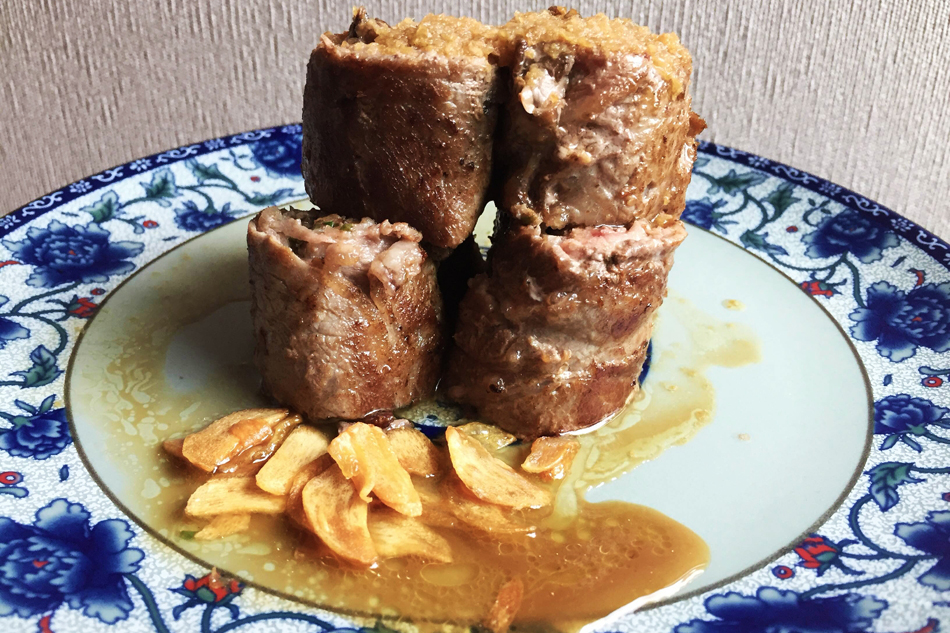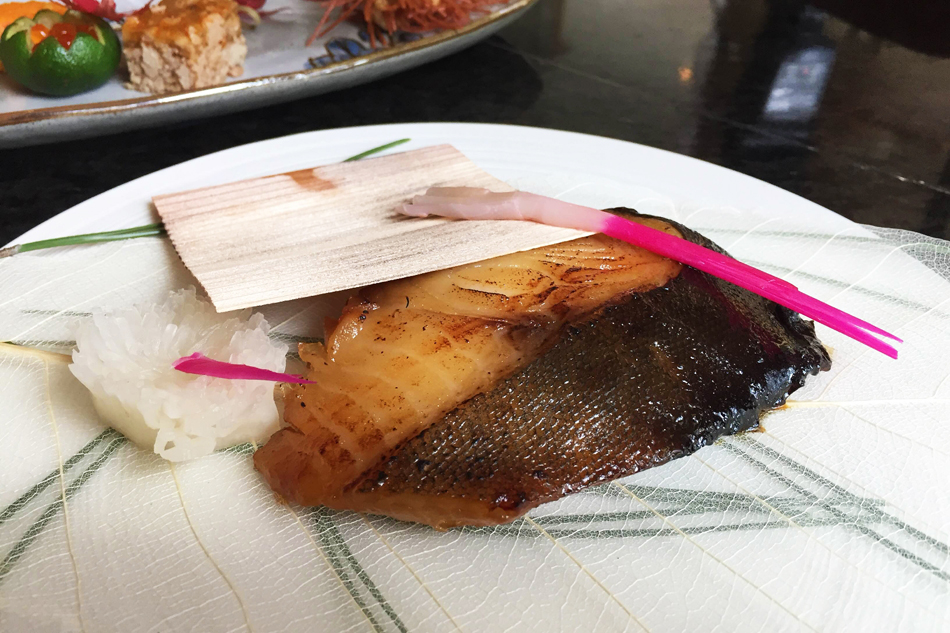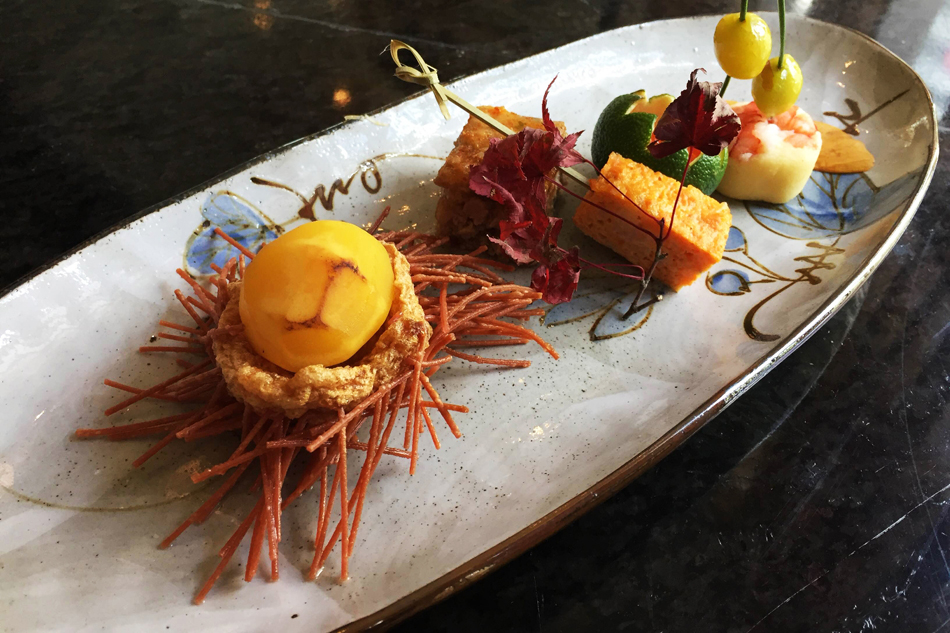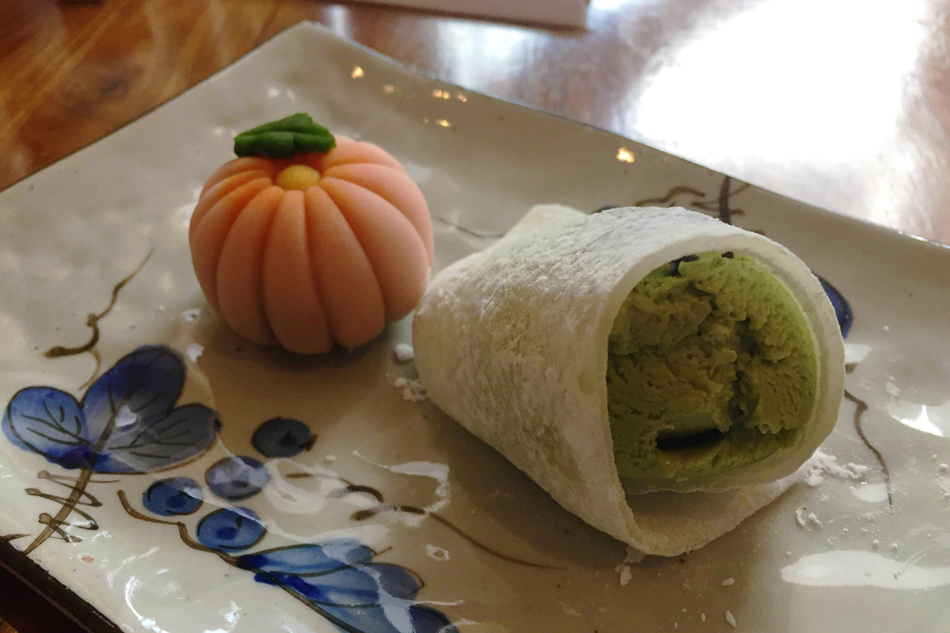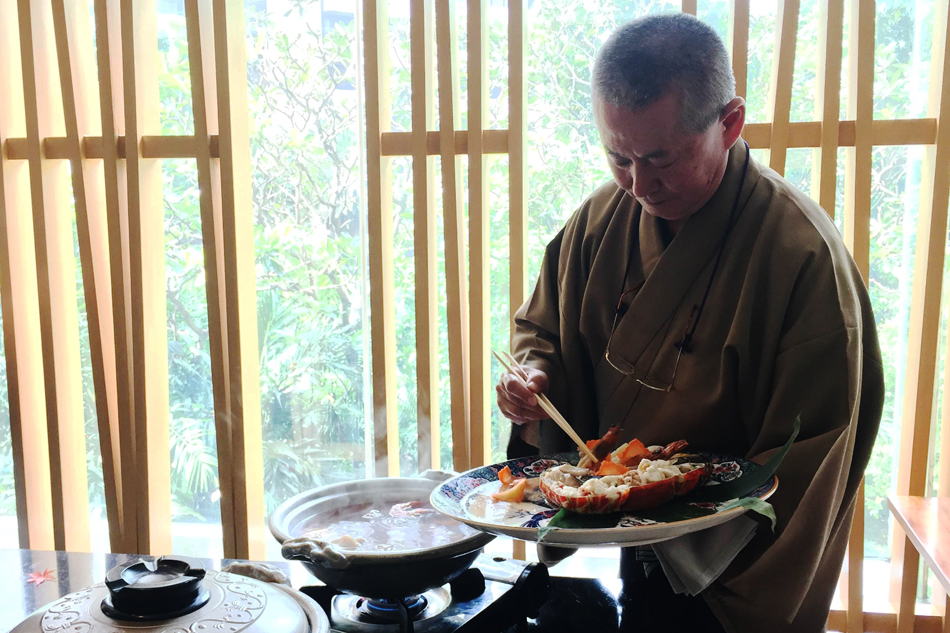Inagiku's aburi sushi out to torch competition
ADVERTISEMENT

Welcome, Kapamilya! We use cookies to improve your browsing experience. Continuing to use this site means you agree to our use of cookies. Tell me more!
Inagiku's aburi sushi out to torch competition
Joko Magalong
Published Nov 16, 2016 11:44 AM PHT
|
Updated Nov 16, 2016 11:45 AM PHT
MANILA -- There is definitely more to Inagiku at the Makati Shangri-La, which is celebrating 18 years of fine Japanese cuisine in Manila, than tempura.
MANILA -- There is definitely more to Inagiku at the Makati Shangri-La, which is celebrating 18 years of fine Japanese cuisine in Manila, than tempura.
Looking around the luxurious restaurant in five-star Makati hotel, it almost seems impossible to imagine that in 1866, Inagiku was only a tempura restaurant in Asakusa, Japan, which gained popularity by using the freshest ingredients fried in their own special tempura oil.
Looking around the luxurious restaurant in five-star Makati hotel, it almost seems impossible to imagine that in 1866, Inagiku was only a tempura restaurant in Asakusa, Japan, which gained popularity by using the freshest ingredients fried in their own special tempura oil.
After 150 years of tradition and craft, Inagiku can now be found in gastronomic hubs around the world (Singapore, China, France, and the Philippines).
After 150 years of tradition and craft, Inagiku can now be found in gastronomic hubs around the world (Singapore, China, France, and the Philippines).
Under the tutelage of Japanese masters Wataru Hikawa and Yoshio Ishikawa, executive chef and manager respectively, Inagiku has stood the test of time and competition by staying true to what the restaurant concept stands for, giving diners an “authentic Japanese dining experience.”
Under the tutelage of Japanese masters Wataru Hikawa and Yoshio Ishikawa, executive chef and manager respectively, Inagiku has stood the test of time and competition by staying true to what the restaurant concept stands for, giving diners an “authentic Japanese dining experience.”
ADVERTISEMENT
“Authentic means it’s the total Japanese standard. This is our commitment. Same standard in Japan. Even if someone like a Japanese President, Prime Minister, or someone from Japan -- they come to Inagiku, they will accept it,” said Ishikawa.
“Authentic means it’s the total Japanese standard. This is our commitment. Same standard in Japan. Even if someone like a Japanese President, Prime Minister, or someone from Japan -- they come to Inagiku, they will accept it,” said Ishikawa.
Although Inagiku restaurants around the world are most well-known for their top-notch tempura (a light airy breading enveloping a fresh-tasting shrimp to be enjoyed just with a sprinkling of matcha salt), it is fast becoming popular for another dish, which has become quite trendy among Japanese food aficionados.
Although Inagiku restaurants around the world are most well-known for their top-notch tempura (a light airy breading enveloping a fresh-tasting shrimp to be enjoyed just with a sprinkling of matcha salt), it is fast becoming popular for another dish, which has become quite trendy among Japanese food aficionados.
Under the helm of Hikawa, who was once hailed as the best Japanese chef outside of Japan, Inagiku Manila is also where you can enjoy one of the best aburi sushis in town.
Under the helm of Hikawa, who was once hailed as the best Japanese chef outside of Japan, Inagiku Manila is also where you can enjoy one of the best aburi sushis in town.
While raw and the freshest seafood is still an enjoyable experience at Inagiku, the slight kiss of heat gives the aburi sushi that little extra umami boost. The sauces -- whether it be cheese or a miso cream -- provide textural and salty-creamy counterpoints. There’s really just something about aburi sushi, and there’s something extra in Inagiku’s version, perhaps due to the technique of preparation by Hikawa.
While raw and the freshest seafood is still an enjoyable experience at Inagiku, the slight kiss of heat gives the aburi sushi that little extra umami boost. The sauces -- whether it be cheese or a miso cream -- provide textural and salty-creamy counterpoints. There’s really just something about aburi sushi, and there’s something extra in Inagiku’s version, perhaps due to the technique of preparation by Hikawa.
“We try to add new new creations, but it’s always tradition based. Not a totally different one like fusion, the taste is always traditional,” explained Ishikawa.
“We try to add new new creations, but it’s always tradition based. Not a totally different one like fusion, the taste is always traditional,” explained Ishikawa.
ADVERTISEMENT
NEW CREATIONS
In the Papaya Oysters, a hollowed out papaya left with a thin layer of its fruit cradles plump oysters swimming in miso cream (one of the sauces in the aburi sushi).
In the Papaya Oysters, a hollowed out papaya left with a thin layer of its fruit cradles plump oysters swimming in miso cream (one of the sauces in the aburi sushi).
It is grilled and then comes to your table au gratin, each spoonful (you must take a bit of the papaya) is a journey towards realizing that indeed papaya, miso and oysters are an unbeatable combination.
It is grilled and then comes to your table au gratin, each spoonful (you must take a bit of the papaya) is a journey towards realizing that indeed papaya, miso and oysters are an unbeatable combination.
Usuyaki Steak, meanwhile, is a tepan dish and similar to a gyuniku negimaki, using mushrooms and garlic inside the marinated beef roll instead of scallions (negi).
Usuyaki Steak, meanwhile, is a tepan dish and similar to a gyuniku negimaki, using mushrooms and garlic inside the marinated beef roll instead of scallions (negi).
Garlic doesn’t overwhelm the beef, and instead adds a robust taste to each roll, supported by the meatiness of the mushrooms. The thinly sliced beef was sweet (thanks to the marinade), and very tender.
Garlic doesn’t overwhelm the beef, and instead adds a robust taste to each roll, supported by the meatiness of the mushrooms. The thinly sliced beef was sweet (thanks to the marinade), and very tender.
In Tofu Tosa Age, which at first glance may look like the more usual agedashi tofu, tofu is deep fried, covered in bonito flakes. To add even more umami, it is topped with shaved nori. It’s the fifth basic taste on steroids.
In Tofu Tosa Age, which at first glance may look like the more usual agedashi tofu, tofu is deep fried, covered in bonito flakes. To add even more umami, it is topped with shaved nori. It’s the fifth basic taste on steroids.
ADVERTISEMENT
Last but not the least new dish is the Gindara Miyosaki.
Last but not the least new dish is the Gindara Miyosaki.
Fresh gindara (cod) is cooked lightly on a grill. A miso marinade that’s also possibly brushed onto the fish as it is grilled creates a shiny sheen to the fish, making it look almost smoked. A bite gives you white, buttery flakes that melt in your mouth.
Fresh gindara (cod) is cooked lightly on a grill. A miso marinade that’s also possibly brushed onto the fish as it is grilled creates a shiny sheen to the fish, making it look almost smoked. A bite gives you white, buttery flakes that melt in your mouth.
KAISEKI AND MORE
One of the other things to experience in Inagiku is the kaiseki, the Japanese multi-course meals that showcase ingredients and techniques.
One of the other things to experience in Inagiku is the kaiseki, the Japanese multi-course meals that showcase ingredients and techniques.
In Inagiku, these are set-menus that feature tempura, sushi, and tepan, with ingredients that range from lobster to cod to beef.
In Inagiku, these are set-menus that feature tempura, sushi, and tepan, with ingredients that range from lobster to cod to beef.
Each kaiseki will usually start with an appetizer like the Zensai. Here, Hikawa takes inspiration from Japan’s current season.
Each kaiseki will usually start with an appetizer like the Zensai. Here, Hikawa takes inspiration from Japan’s current season.
ADVERTISEMENT
For this time of the year, it’s autumn. There’s sweet potato on top of a spiny fish cake, tofu, some cold shrimp atop mashed potato topped by gingko nuts, and roe to add some bursts of saltiness to each bite. Sushi, soup, a featured item follows, ending with dessert.
For this time of the year, it’s autumn. There’s sweet potato on top of a spiny fish cake, tofu, some cold shrimp atop mashed potato topped by gingko nuts, and roe to add some bursts of saltiness to each bite. Sushi, soup, a featured item follows, ending with dessert.
Dessert can be a scoop of ice cream in Japanese flavors (green tea, red bean, black sesame, wasabi). Mochi lovers can enjoy their ice cream wrapped in a rice flour sheet, and served beside a beautiful piece of mochi with red bean filling.
Dessert can be a scoop of ice cream in Japanese flavors (green tea, red bean, black sesame, wasabi). Mochi lovers can enjoy their ice cream wrapped in a rice flour sheet, and served beside a beautiful piece of mochi with red bean filling.
If you’re not in the mood for a multi-course meal, Inagiku’s ala carte menu has an impressive selection of dishes -- from the aforementioned sushi and the various new dishes, to hot pot noodle dishes like the Udon Suku Nabe, a clear full-flavored soup of seafood, chicken and vegetables, with thick and chewy udon noodles.
If you’re not in the mood for a multi-course meal, Inagiku’s ala carte menu has an impressive selection of dishes -- from the aforementioned sushi and the various new dishes, to hot pot noodle dishes like the Udon Suku Nabe, a clear full-flavored soup of seafood, chicken and vegetables, with thick and chewy udon noodles.
From the kaiseki to the world-famous tempura to Manila’s best Aburi Sushi, Inagiku’s 18 years in the industry is a testament of what it takes to last -- a winning formula of authenticity, attention to detail, and Japanese food that is always consistently done well.
From the kaiseki to the world-famous tempura to Manila’s best Aburi Sushi, Inagiku’s 18 years in the industry is a testament of what it takes to last -- a winning formula of authenticity, attention to detail, and Japanese food that is always consistently done well.
“Inagiku’s secret is our patron’s trust. Despite the competitors left and right, our guests always come back for Inagiku always meets or even exceeds expectations,” Ishikawa said.
“Inagiku’s secret is our patron’s trust. Despite the competitors left and right, our guests always come back for Inagiku always meets or even exceeds expectations,” Ishikawa said.
ADVERTISEMENT
ADVERTISEMENT



